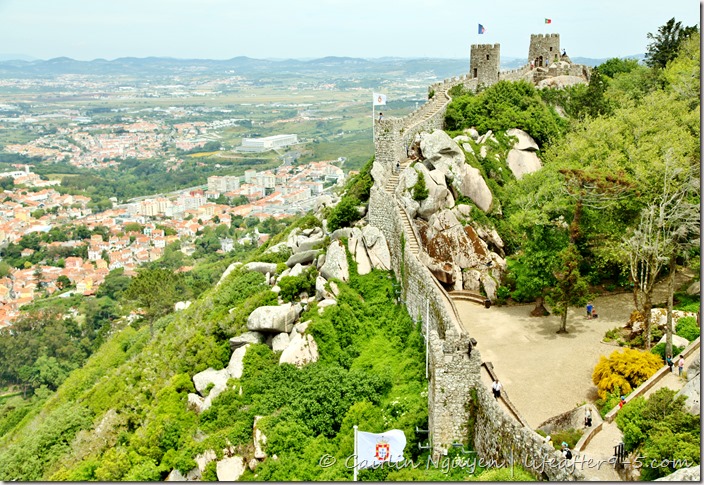
Growing up watching Disney movies, I’ve always dreamt of walking through a fairy tale landscape. Sintra, a small picturesque Portuguese town set amidst pine covered hills, is a fairytale come true, complete with turreted palaces. It is an extraordinary place with a rich history, ornate palaces, and ancient ruins – all of which are protected as a UNESCO World Heritage Site. After visiting in 1809, the famous British poet and traveler Lord Byron declared that the town is “perhaps in every respect the most delightful in Europe,” and calling it a “glorious Eden” in his epic poem Childe Harold’s Pilgrimage.
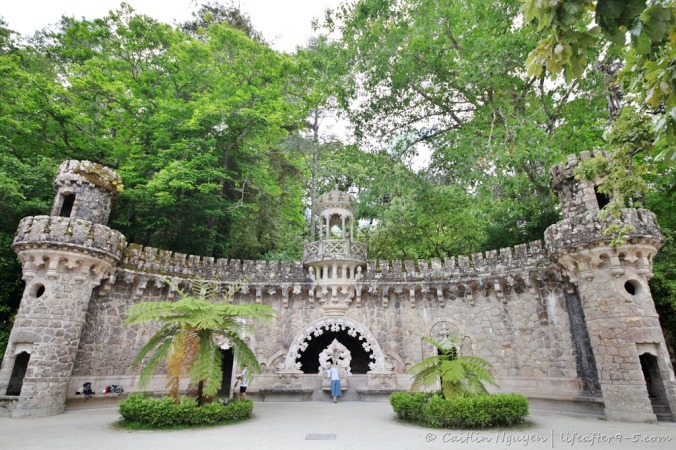
The slightly cooler temperatures enticed Portugal’s nobility to its the mist-soaked forests for centuries. It became the summer residence of the Portuguese royal family and a number of wealthy aristocrats who built stately homes. The rippling mountains are dotted with colorful palaces, extravagant mansions, and exotic gardens folding into the moss-covered hills that roll down to the blue Atlantic. Sintra is unmistakably the land of storybook castles that include the Palácio Nacional de Sintra, Palácio da Pena, Quinta de Regaleira, and the Palácio de Monserrate – each more impressive than the last.
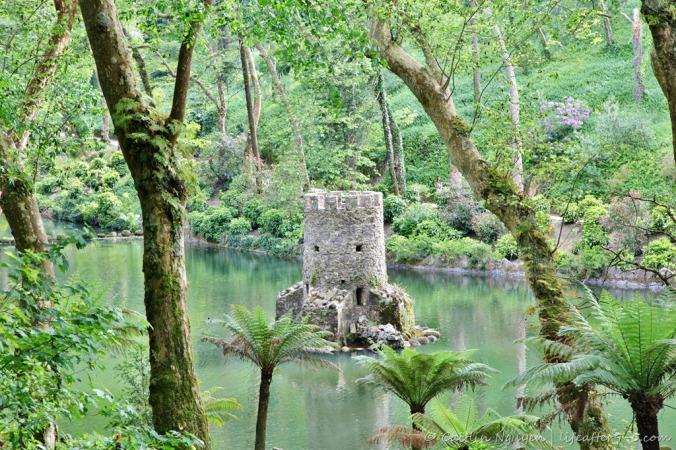
Getting There: It is located just 30 miles from the capital city of Lisbon. You can get there a number of ways, either by train, car, or a combination of the two. The drive takes about 35 minutes on the IC highway, but since Fausto didn’t feel comfortable driving in the city, we decided to take the train to Cascais before picking up our rental. A rental car costs about 55 Euro per day. You can also take a train directly to Sintra, leaving from the main Rossio train station. The train leaves every 20 minutes on the dot and the ride takes about 40 minutes. Tickets are pretty cheap – only 2-3 Euro each way. Since the parking spaces in Sintra are sparse, it’s recommended that you take the train into town and take the bus around. Some of the sights are connected by the 435 bus route, which departs from the Sintra train station. Personally, I find that it’s a lot more convenient to have a car, which gave us flexibility to visit the further places.
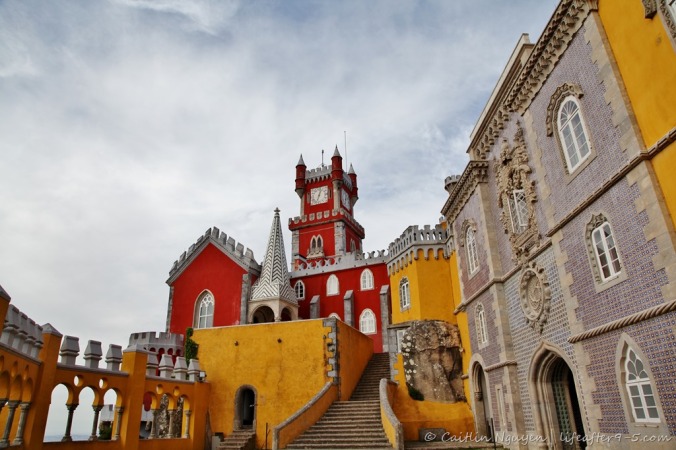
A few tips before we get started:
- There is a lot to see and you need at least 1.5 to 2 days to get through all of the palaces.
- The admission cost is very high for each palace, much more expensive than what we were used to in Porto and Lisbon. It makes sense because these palaces are massive and require a lot of upkeep. If you know ahead of time where you want to visit, you can save some money by buying the combo ticket, which gives you a 5-10% discount It’s not much, but it’s better than nothing. A bonus is that once you get the ticket you don’t have to wait in line at the other places.
- Make sure you wear comfortable walking shoes. The notable sights are spread out and quite challenging to get to. The hiking trails are filled with uneven stone steps, making it difficult to walk if you’re not wearing the right footwear.
- Bring a jacket or a sweater, because it can be cool and windy on the mountain even in the middle of the summer.
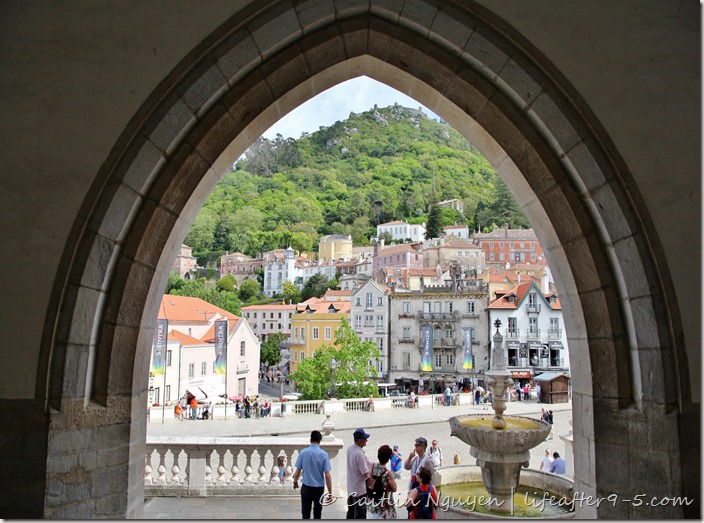
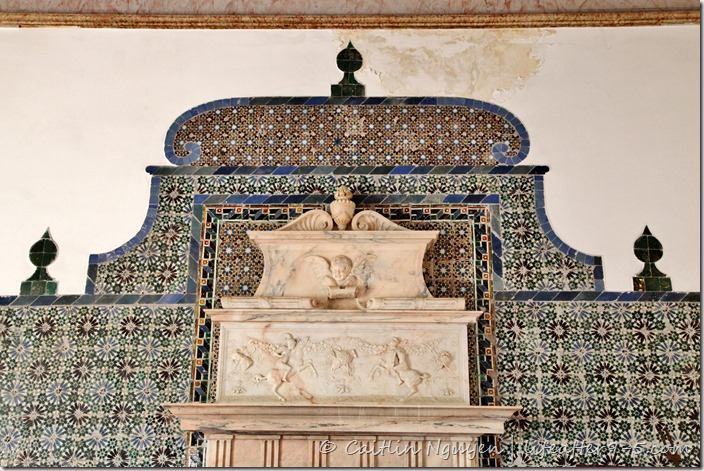
Palácio Nacional de Sintra
The Gothic styled National Palace is located in the center of the historic square surrounded by cobbled stone streets lined with colorful shops and cafes. The notable conical chimneys protruding from the kitchen are a familiar sight, one of the most recognizable landmarks in Sintra. The building, dating back to the 14th century, is a combination of the Moorish, Gothic, and Manueline styles.
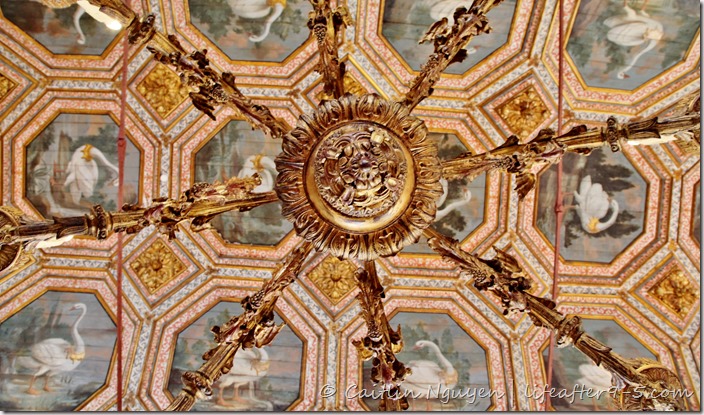
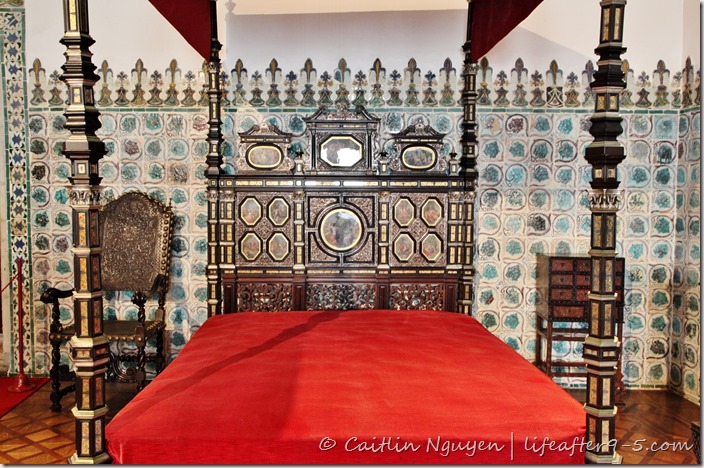 King Sebastian’s bed chamber
King Sebastian’s bed chamber
Its origins date back to Islamic times, but it wasn’t until the 12th century when it was taken over by the Royal Family of Portugal. The palace was then used extensively as a summer resort by many of the Portuguese Kings and Queens from the early 15th through the late 19th century. Renovations and additions were done throughout the years, in particular by Queen Amelia who was quite fond of the palace. After the Republic was founded in 1910, the castle returned to the state and has become a popular tourist attraction.
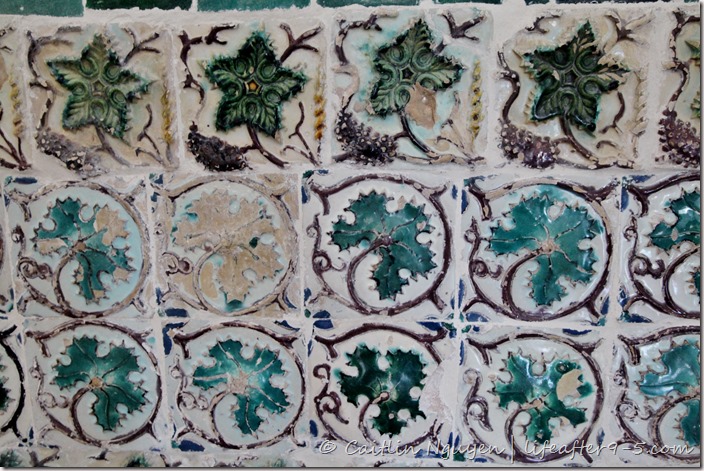
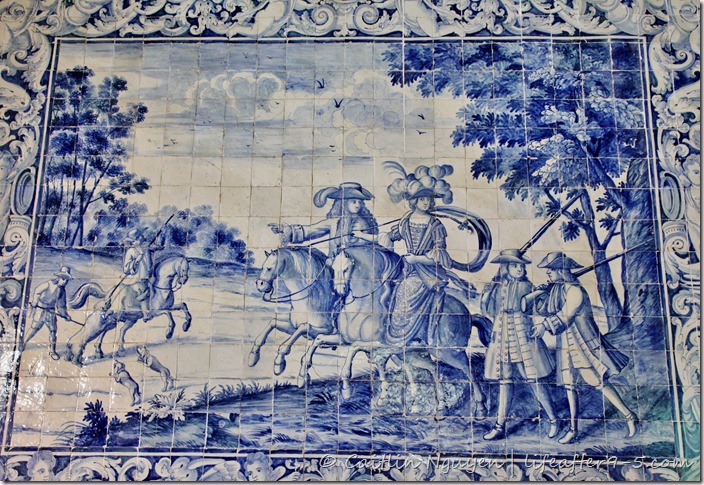
The austere Gothic exterior of the palace hides a collection of richly decorated state rooms connected through a series of interconnecting courtyards, stairs and corridors. Each room reflects the extensive history of the palace, with highlights including the Sala dos Cisnes (Swan Room) banquet hall, where the octagonal paneled ceiling is painted with swans. Another standout is the Sala dos Brasões (Coat-of-Arms Room) with its domed ceiling decorated with the coat of arms of 74 Portuguese noble families, and its walls lined with tiled panels. The palace has a large collection of hand-painted azulejos (ceramic tiles), some dating back to the 16th century, when tiles began to be used in Portugal. Some are raised leaf which was popular at the time while others have geometric patterns.
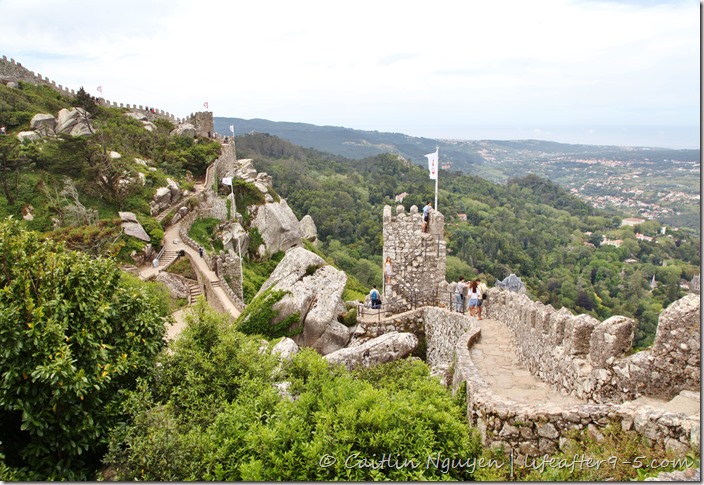
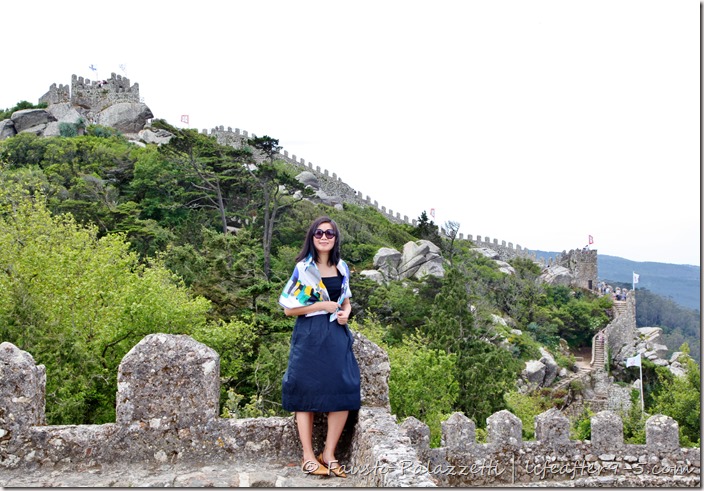
Castelo dos Mouros
The Moorish Castle was constructed around the 8th and 9th centuries to help protect against the Arab occupation of the Iberian Peninsula. It became an important military stronghold during the times of the Reconquest. Over time, its strategic importance diminished and it was gradually abandoned and left to ruin. After the 1755 earthquake, very little remained of the original buildings, leaving behind only the ancient defense walls winding their way along the side of the mountain, like a miniature Great Wall of China.

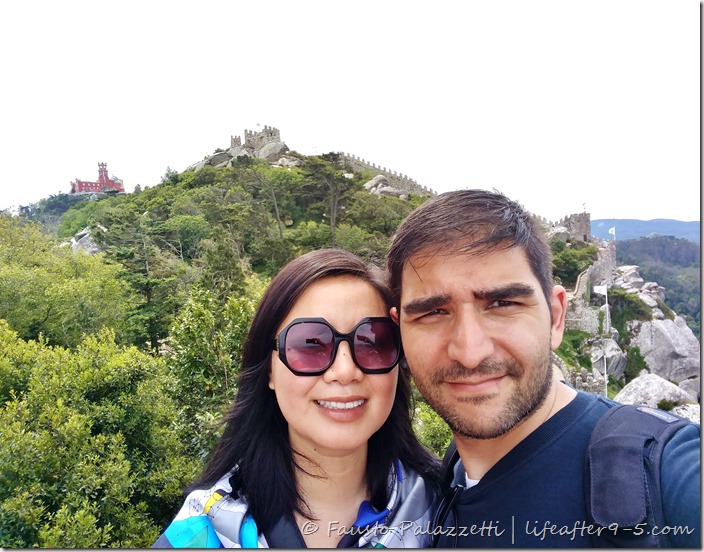
The steep woodland trail leading up to the keep meanders through the tall shaded trees covered in ferns, lichens, and moss. Walking on the uneven stone steps that were set a thousand years ago made me feel like I was transported to another time. Half-way up, there was a flautist playing music that drifted down the mountain as if to encourage weary travelers to keep pushing on. Even though the path was long and arduous, I was completely lost in the beauty of the place that simply left me in awe.
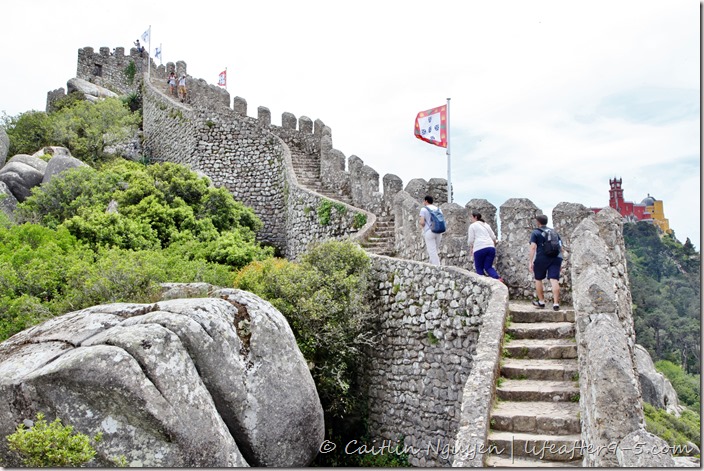
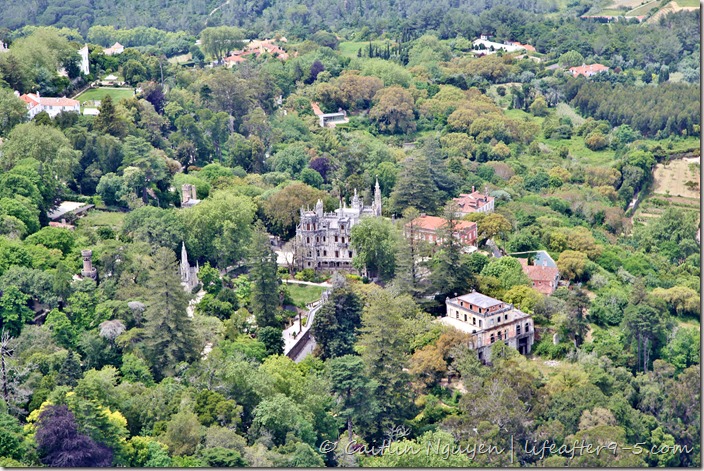

The ruins of the Moorish castle with its brightly colored flags flying from the ivy-covered battlements is clearly visible from most points. At 1,300 feet above sea level, it has an amazing panoramic view over Sintra and the surrounding region. On the other side, the Pena Palace stands out from the densely wooded hill like a technicolor dream.

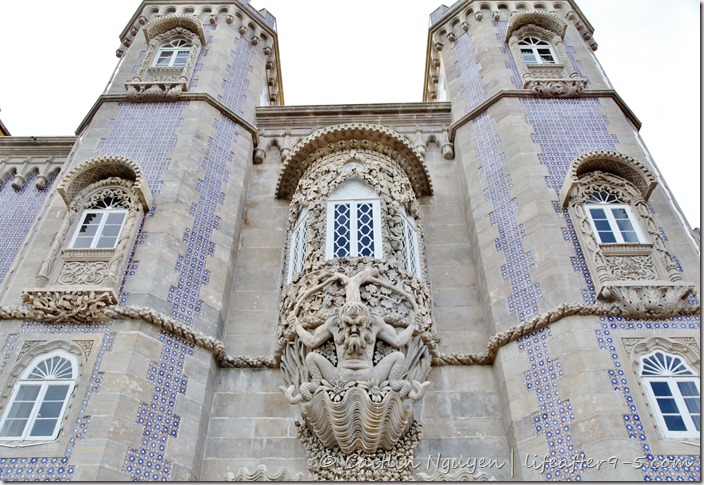
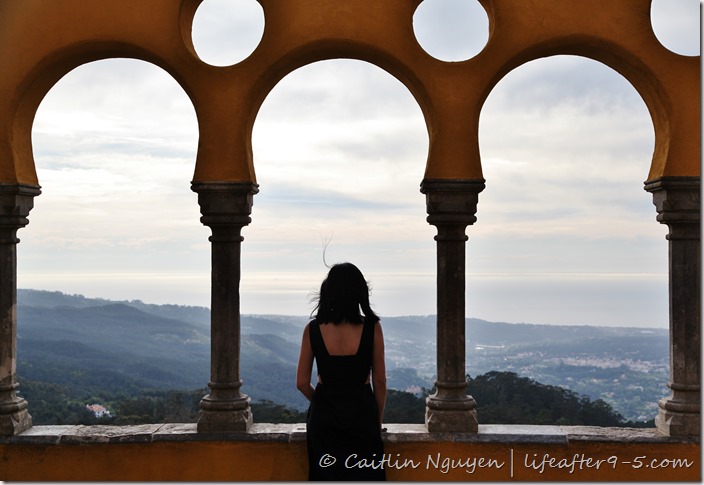
Palácio Nacional da Pena
Perched high on a hilltop, Pena Palace is one of the most iconic images in the country. It has been recognized as one of the Seven Wonders of Portugal, and designated a UNESCO World Heritage Site. Built in the 1840s by King Fernando II, it is one of the world’s best examples of nineteenth-century Romantic architecture, often compared to Schloss Neuschwanstein in Bavaria, although it was built more than thirty years earlier.
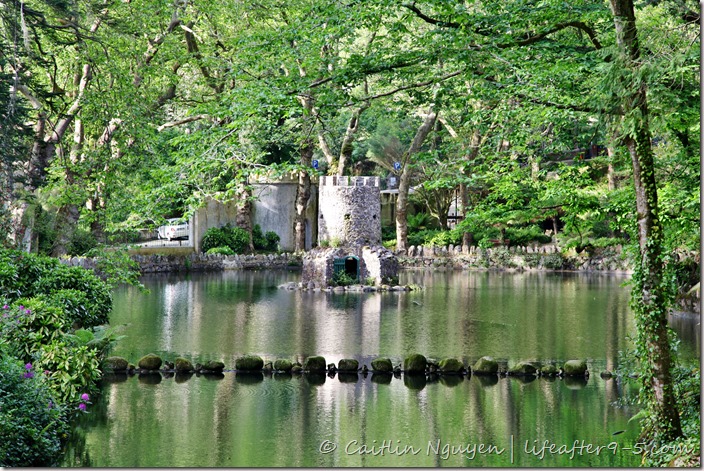
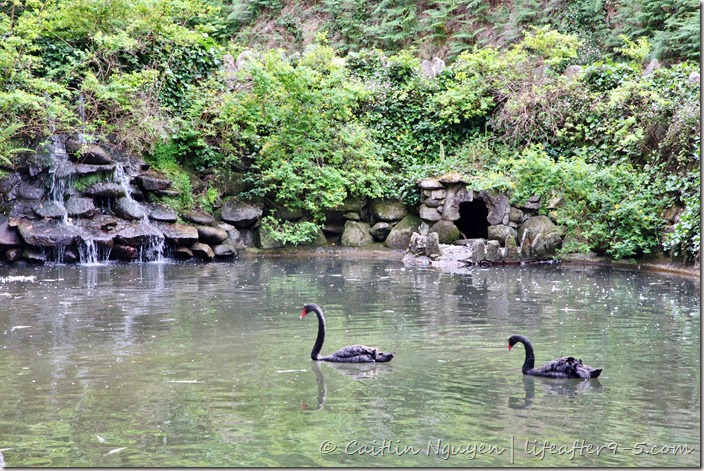
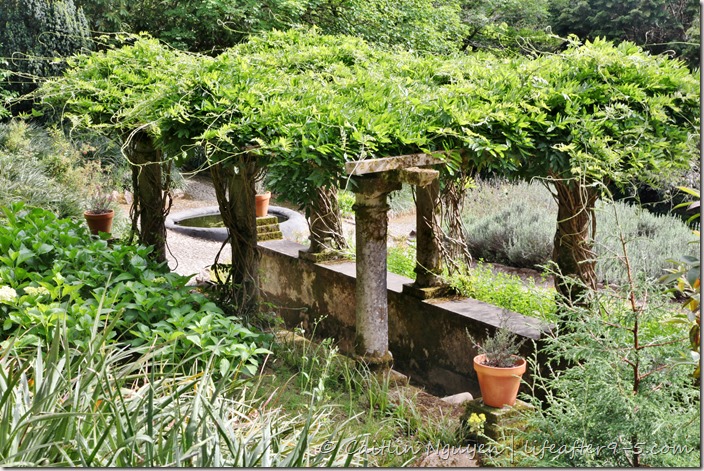
The castle grounds spread out over 200 hectare and are home to a large variety of trees and exotic plants from the former colonies of the Portuguese empire. The beautifully landscaped property is filled with many interesting sights – black swans floating on the mirror ponds, hidden grottoes, and fountains between the heavily scented gardens.
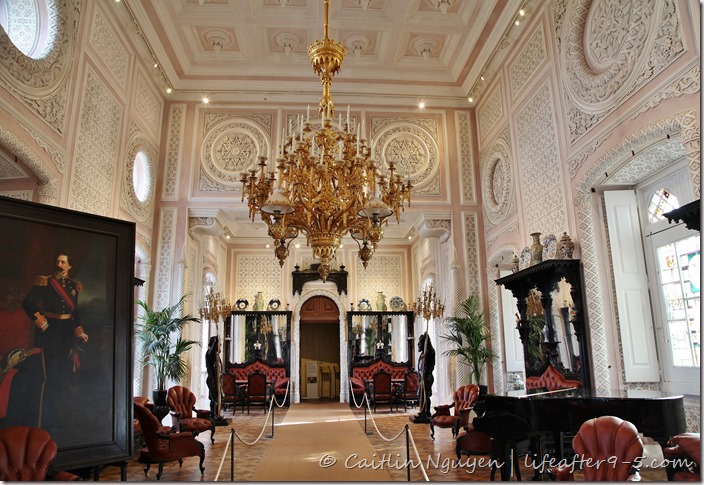
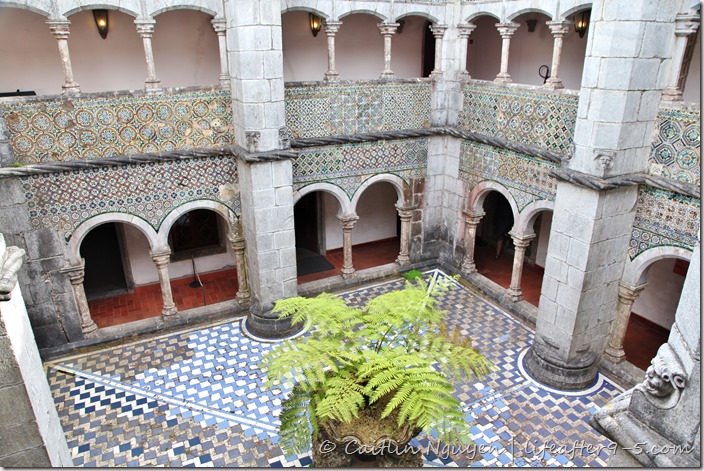
Palácio Nacional da Pena is a wacky combination of domes, keyhole gates, and turrets painted in bright shades of red and yellow. To cross the threshold into the castle, you have to walk under a gargoyle perched above a Neo-Manueline arch. The extravagant interior is decorated in late dark wood furnishings, paintings, and priceless porcelain. At the center is an open courtyard, embellished with century old ceramic tiles. The place was continually extended and rebuilt until the dissolution of the monarchy. Everything was kept exactly the way was in 1910, when the Portuguese nobility fled Portugal due to the revolution.

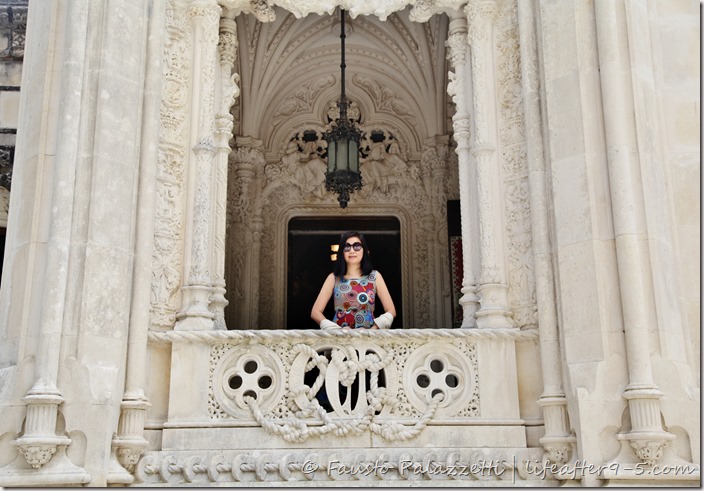
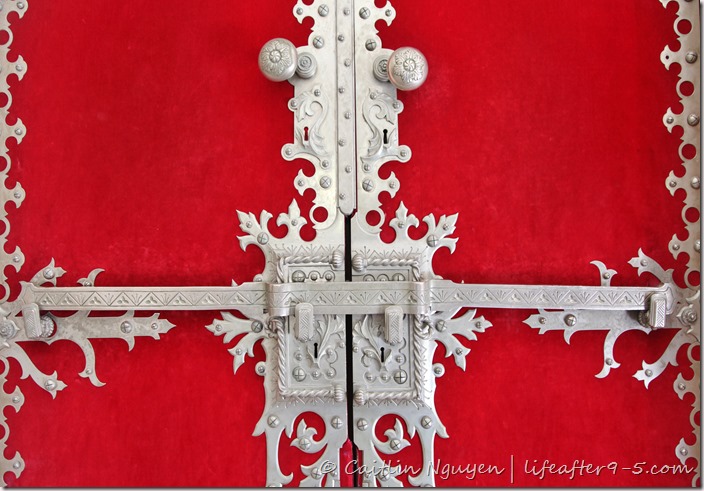
Quinta da Regaleira
Quinta da Regaleira is an estate located near the historic center of Sintra, but unlike the other castles, it was owned by a fabulously wealthy Portuguese businessman, Carvalho Monteiro. He brought in Luigi Manini, the creator of La Scala Operahouse to design his dream hideaway. The place embodies a combination of Roman, Gothic, Renaissance, and Manueline style of architectures. The estate, also designated a UNESCO World Heritage Site, was acquired by the by the town of Sintra and opened to the public in 1998. The palace is beautifully preserved providing visitors a glimpse into the lives of rich Portuguese merchants in the early twentieth century.


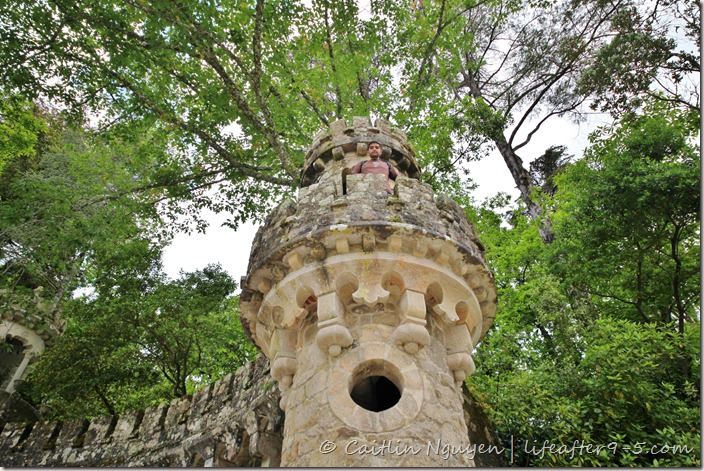
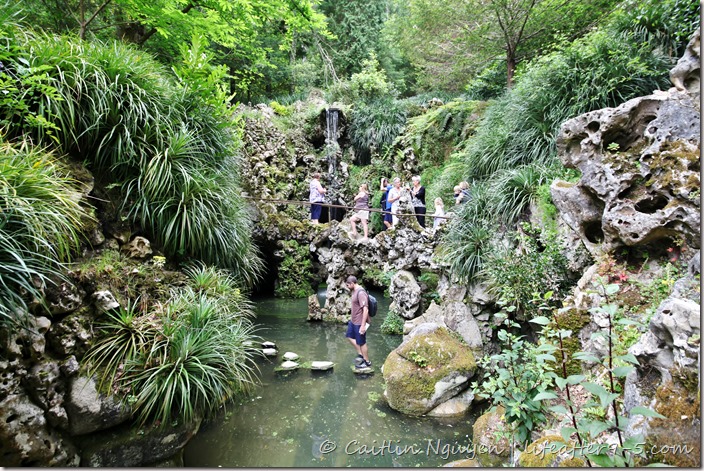
The extravagant mansion, filled with turrets and ornate carvings of mythological creatures is surprisingly small – at least compared to exterior garden. The elaborate grounds – spread over four hectares and made up of secret tunnels, lush rolling hills, and hidden grottoes – is undoubtedly the main attraction. It’s easy to get lost on the many footpaths that creep under the drooping wisteria. Statues of gods and nymphs are a constant companion as you walk along the stream or pause by the waterfall that empties out to a water-lilied lake. It’s not hard to imagine a fair maiden sitting on top of one of the tall towers, letting down her hair. This fairy tale castle sitting amongst a green landscape feels completely magical.
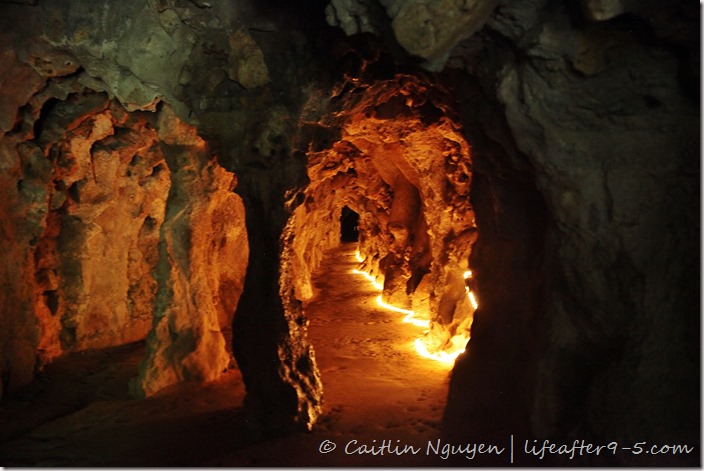
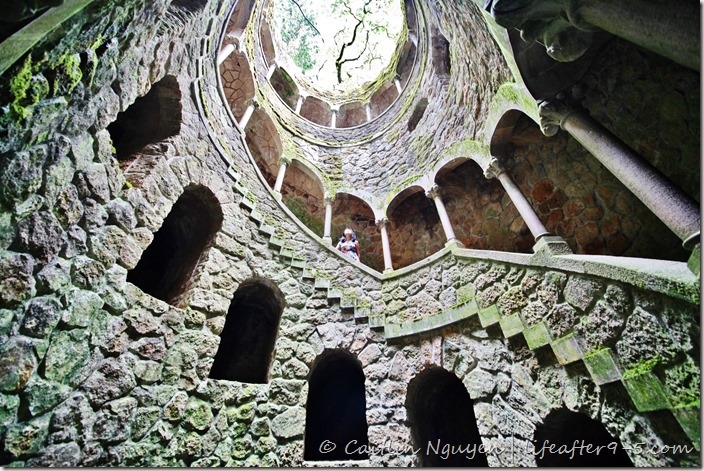

One of the most beguiling features of the estate is the mysterious Initiation Well, located deep below the ground. The inverted well, connected by underground tunnels was used for secretive Masonic initiation rites. The well is divided in nine platforms “reminiscent of the Divine Comedy by Dante and the nine circles of Hell, the nine sections of Purgatory and the nine skies which constitute Paradise.” At the bottom of the well you’ll find a Rosicrucian Cross, which is said to be the coat of arms of Carvalho Monteiro.

As I left the garden, it felt like I just woke up from a fantasy filed with enchanting creatures and romance. The palace grounds are massive and require a few hours to explore. It’s crucial to arrive here early, especially if you want to find a parking space.

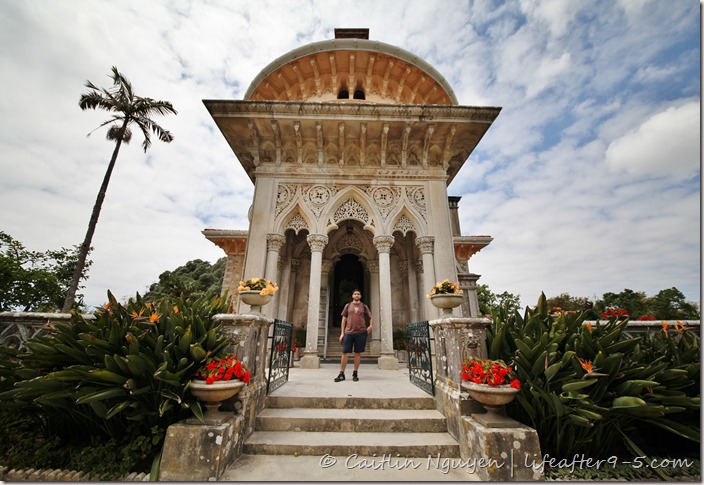

Monserrate Palace
The Monserrate Palace, located about 4km outside of the Sintra town center, was built for Sir Francis Cook – an English millionaire. The palace sits in the middle of a manicured lawn overlooking the lush 30-hectare park. The style and architecture of the place is strongly influenced by the Gothic, Moorish, and Indian designs. The palace has hosted many literary figures including Lord Byron, who visited and wrote about it in his poem “Childe Harold’s Pilgrimage”.

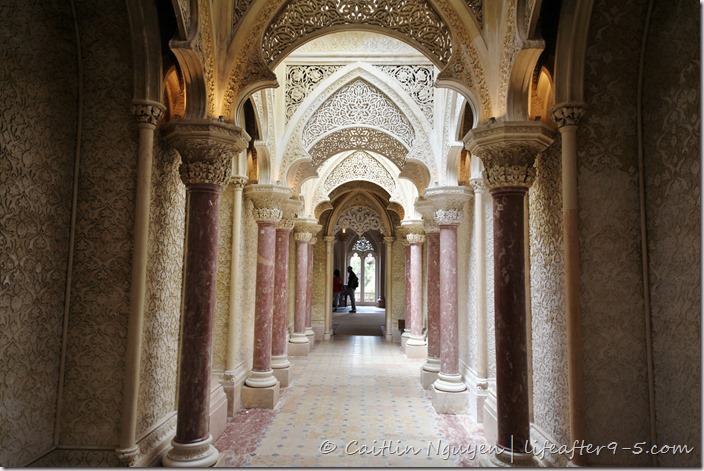
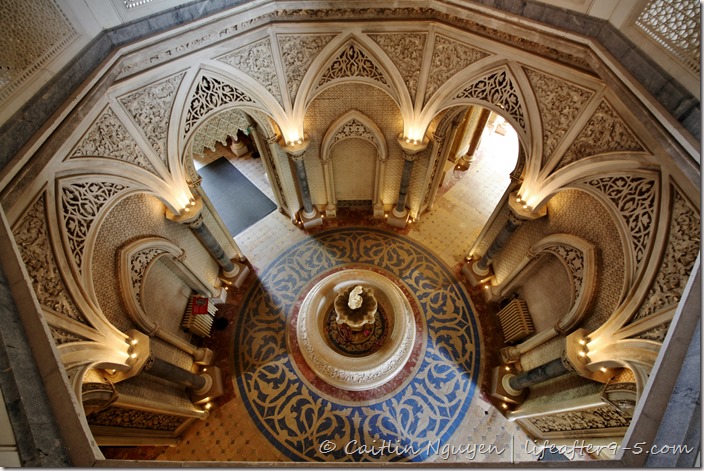
The interior of the Palace of Monserrate has a distinctive Middle Eastern design from its doors and windows to the wonderfully intricate walls. Stepping into the palace you’re greeted with a fountain located in the center. On either side is a long corridor with beautifully carved pillars and arches. The circular music room located at one end of the building is breathtaking with its magnificent dome. The bust of muses look down from above, providing inspiration to many generations of musicians.

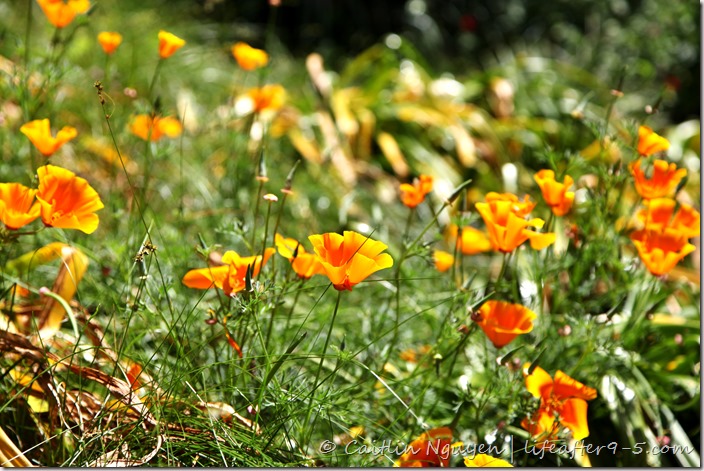
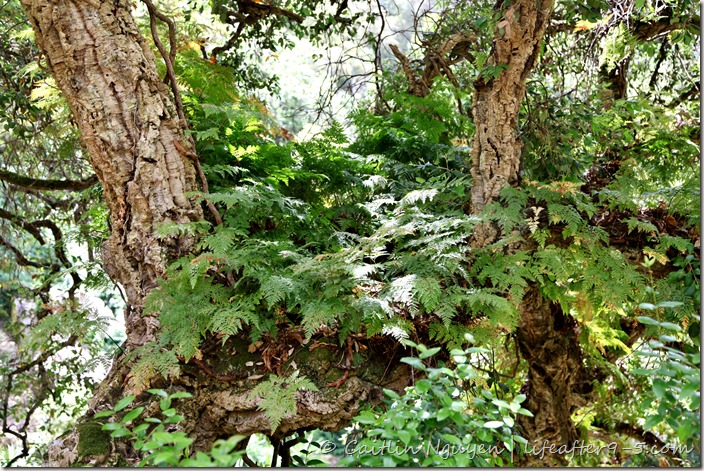
While the palace is an architectural gem, it is the beautifully landscaped gardens that are most famous. Monserrate Park’s clever design and ingenious botanical engineering embraced the unique micro climates that are found within the Sintra mountain region to create a home for over 3,000 exotic plant species, some from as far away as Mexico and South Africa. Its wooded hillsides are filled with tropical tree ferns, Chinese weeping cypress, and Himalayan rhododendrons.
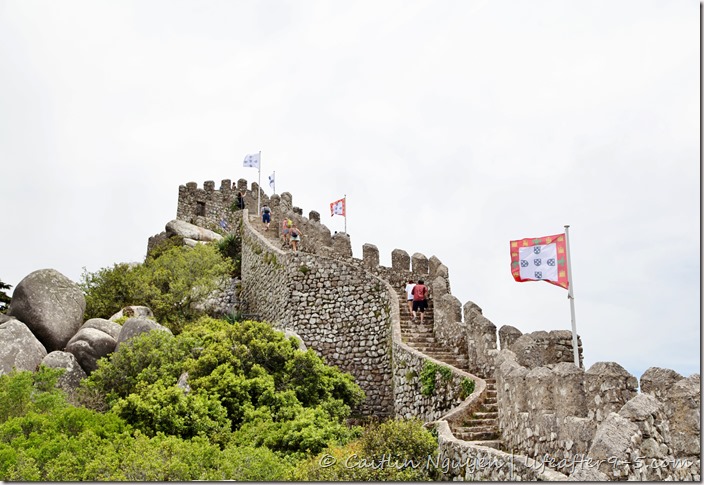

Hi Caitlin, as always I LOVE, LOVE, LOVE yr pics and really enjoyed reading this very informative and elaborate post!
As you know I only had time to vist 3 of the sights you mention here because we only had 1 day and I happy u stayed longer and were able to show me the rest! This place is def one of my faves in Europe and truly magical! Thnx for capturing and describing it so well👌
Kisses!! Naomi | AuthenticChica
LikeLiked by 1 person
Thank you so much Naomi!! It’s entirely thanks to you!!! I was originally only planning on staying for 1 day, which would not have been enough. These places are massive add you know. But thanks to your recommendation, I extended the stay and it was completely worth it!! ❤❤😘😘
LikeLiked by 1 person
Definitely, a must see place around Lisboa ❤
LikeLiked by 1 person
Definitely!! It was so magical.
LikeLike
So gorgeous, those palaces!!
LikeLike
Have you guys been that way? It was definitely my fav part.
LikeLike